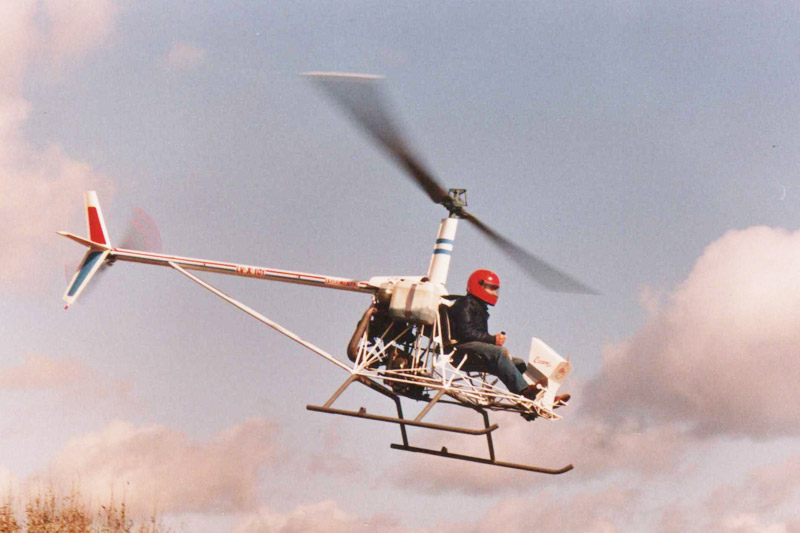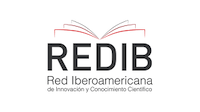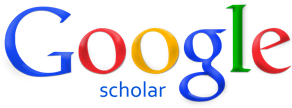The primitive interpretation of design in the Argentinian helicopter factory Cicaré S.A. (1956-2015)
DOI:
https://doi.org/10.18667/cienciaypoderaereo.673Keywords:
Aeronautics, knowledge, design, helicopter, engineering, prototypeAbstract
The technological knowledge generated by a company can be defined as the set of information coming from the design, analysis, construction and testing of its technological products, innovations, and processes (McGinn, 1991). This type of knowledge entails characteristics that make it difficult to be preserved and transmitted, particularly due to its high tacit component (Polanyi, 1966). For this reason, it is important to investigate the characteristics of this class of knowledge in order to facilitate its creation, management, conservation, and transmission. Therefore, the objective of this study is to identify the work methodology of activities associated with the design and manufacturing of helicopters, as well as the knowledge management generated and its evolution path over time in a company selected as case study. The practices and roles played by each of the actors within the company are also significant aspects to be considered. The technical analysis of all the helicopters developed by the company Cicaré S.A. has been used as source of information; although, in particular, there are not available records of this company’s activities or financial statements over time. Interviews with people related to the current firm and its history have been fundamental. Cicaré s.a. is an Argentinian aeronautical company working in the development and manufacturing of internationally recognized helicopters. It is considered a benchmark in the industry for the innovations it has developed on this type of aircraft, which are used today throughout the world. The first vertical flight in South America, the development of one of the first ultralight helicopters and a real controlled flight simulator are some of the firm’s main innovations. This study seeks to identify the coexistence of two design and innovation methodologies applied to aeronautical technology by this company. On the one hand, there is a production department that, using standard engineering methodology (Mott, 1995), produces serial helicopters. Besides, a research and development department applies prototype analysis methodology (Gero, 1990) looking for innovations and product improvements.
Downloads
References
Arancibia, F. (2006). Conocimiento Tácito y Conocimiento Tecnológico. Buenos Aires: IEC-UNQ.
Bunge, M. (1974). Technology and Culture. Baltimore: John Hopskins University Press.
Bunge, M. (1966). Toward a Philosophy of Technology. Baltimore: John Hopskins University Press.
Bush, V. (1945). Science: The endless frontier. Carta de remisión.
Ciapuscio, H. (1996). El conocimiento tecnológico. Buenos Aires: Revista Redes.
Collins, H. (2010). Tacit and Explicit Knowledge. Chicago: University of Chicago Press.
Daumas, M. (1962). Histoire Générale des techniques. Paris: Presses Universitaires de France.
Federal Aviation Administration. (2012). Helicopter Flying Handbook. Washington: Flight Standards Service.
Ferguson, E. (1971). Technology and Culture: The American-ness of American Technology. Baltimore: John Hopskins University Press.
Ferguson, E. (1992). Engineering: The Mind’s Eye. Cambridge: The MIT Press.
FONART. (2015). Manual de Diferenciación entre Artesanía y Manualidad. Distrito Federal México: SEDESOL.
Galison, P. (1999). The Trading Zone: Coordinating Action and Belief, en Biagioli, M., The Science Studies Reader. Abingdon: Routledge.
Gero, J. (1990). Design Prototypes: A Knowledge Representation Schema for Design. Palo Alto: AI Magazine.
Gille, B. (1978). Histoire des Techniques. Paris: Gallimard.
Halbritter, F. (2009). De Saladillo al mundo, Augusto Cicaré y sus helicópteros. Buenos Aires: Argentinidad.
Hall, A. (1977). History of Technology. Londres: Bloomsbury.
Koyré, A. (1973). Estudios de Historia del Pensamiento Científico. Paris: Gallimard.
Layton, E. (1971). Mirror-Image Twins: The Communities of Science and Technology in 19th-Century America. Baltimore: John Hopskins University Press.
Leishman, J. (2000). Principles of Helicopter Aerodynamics. Cambridge: Cambridge University Press.
Mackenzie, D. (1996). Knowing Machines: Essays on Technical Change. Cambridge: The MIT Press.
McGinn, R. (1991). Ciencia, Tecnología y Sociedad. Palo Alto: Stanford University Press.
Merton, R. (1977). La Sociología de la Ciencia. Madrid: Alianza.
Mott, R. (1995). Diseño de Elementos de Máquinas. Buenos Aires: Pearson Educación.
Nonaka, I. (2000). La empresa creadora de conocimiento. Brighton: Harvard Business School Publishing Corporation.
Norton, R. (2000). Diseño de Maquinaria. Nueva York: McGrow Hill.
Petroski, H. (1985). To engineer is human: the role of failure in successful design. New York: St Martin’s Press.
Polanyi, K. (1962). Tacit Knowing: Its Bearing on Some Problems of Philosophy. Review of Modern Physics.
Sábato, J. y Mackenzie, D. (1982). La Producción de Tecnología. Distrito Federal México: ILET.
Sessler, P. (2010). Ultimate American V-8 Engine Data Book 2nd Edition. Beverly: Motorbooks.
Singer, C. (1954). A History of Technology. Oxford: Oxford University Press.
Staudenmaier, J. (1985). Technology Storytellers. Cambridge: The MIT Press.
Vincenti, W. (1990). What engineers know and how they know it. Baltimore: Johns Hopskins University Press.
Wainer, A. (2018). Economía y política en la Argentina kirchnerista (2003-2015). Distrito Federal México: Revista Mexicana de Sociología.

Downloads
Published
Issue
Section
License
Assignment of Copyrights
Authors assign Ciencia y Poder Aéreo journal the exclusive rights (reproduction, distribution, public communication, and transformation) to exploit and commercialize their work, in whole or in part, in all the formats and modalities of present or future exploitation, in all languages, throughout the life of the work and throughout the world.
All contents published in Ciencia y Poder Aéreo journal are licensed under a Creative Commons Attribution 4.0 International License, whose complete information is available at http://creativecommons.org/licenses/by/4.0/
Under the terms of this license, users are free to download, print, extract, archive, distribute and publicly communicate the content of articles, provided that proper credit is granted to authors and Ciencia y Poder Aéreo, scientific journal of the Graduate School of the Colombian Air Force. Except when otherwise indicated, this site and its contents are licensed under a Creative Commons Attribution 4.0 International License.
For other uses not considered under this license it is required to contact the Director or the Editor of the journal at the e-mail address cienciaypoderaereo1@gmail.com.
The Graduate School of the Colombian Air Force and this publication are not responsible for the concepts expressed in the articles, including the metadata or the affiliation stated by authors. This is the full responsibility of the authors.





















